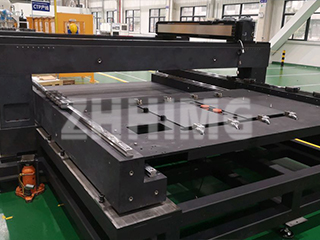Granite components are widely used in various industries such as machinery, architecture, metrology, and precision tooling due to their excellent hardness, wear resistance, and corrosion resistance. However, achieving high machining accuracy and consistent quality in granite parts requires careful control over multiple factors throughout the production process.
1. Selection of High-Quality Granite Material
The foundation of precision manufacturing lies in the raw material. The physical characteristics of granite—such as its grain structure, hardness, and uniformity—directly influence the final accuracy and durability of the component. It is critical to select granite blocks with uniform texture, no internal cracks, minimal impurities, and optimal hardness. Poor-quality stone may lead to dimensional inaccuracies or surface defects during machining. Careful inspection of the stone’s integrity before processing helps minimize the risk of breakage or distortion.
2. Advanced Equipment and Precision Machining Techniques
To achieve micron-level accuracy, manufacturers must employ advanced cutting, grinding, and polishing equipment. CNC-controlled machines allow for highly accurate shaping and profiling according to pre-programmed dimensions, significantly reducing manual errors. During surface grinding and polishing, selecting the right abrasive tools and setting appropriate parameters based on the granite’s characteristics is essential. For parts with curved or complex surfaces, high-precision CNC machines or EDM (Electrical Discharge Machining) can ensure smooth finishes and precise geometry.
3. Skilled Operators and Rigorous Quality Control
Experienced technicians play a vital role in maintaining machining quality. Operators must understand the unique behavior of granite under different tooling conditions and be able to make real-time adjustments during processing. At the same time, a robust quality management system is crucial. From raw material inspection to in-process checks and final product testing, each step must follow strict quality control procedures to ensure the end product meets required tolerances and international standards (such as DIN, GB, JIS, or ASME).
4. Well-Designed Workflow and Post-Processing Maintenance
An efficient and logical processing sequence contributes significantly to product consistency. Each stage of production—cutting, grinding, calibration, and assembly—should be arranged according to the component’s design and granite’s mechanical properties. After machining, granite parts should be cleaned, protected, and stored properly to prevent damage from moisture, thermal shifts, or accidental impact during transport or installation.
Conclusion
Maintaining high machining accuracy and quality in granite components is a comprehensive process involving raw material selection, advanced manufacturing technology, skilled labor, and systematic quality control. By optimizing every aspect of production, manufacturers can deliver reliable, high-precision granite products that meet the rigorous demands of modern industrial applications.
Post time: Jul-24-2025

